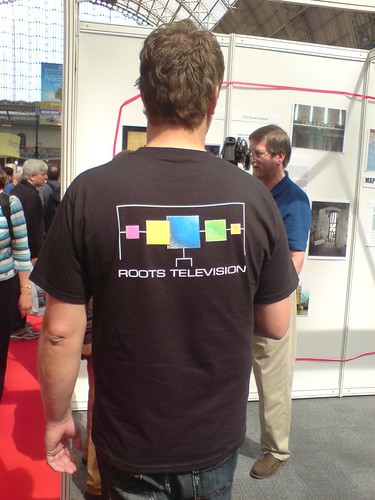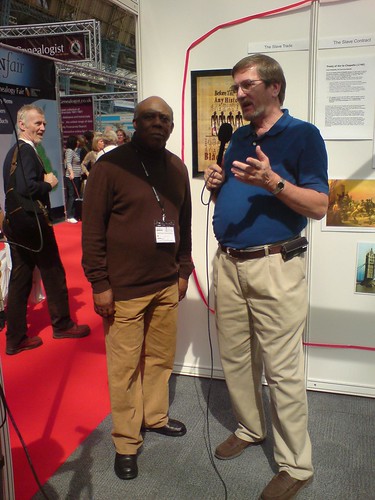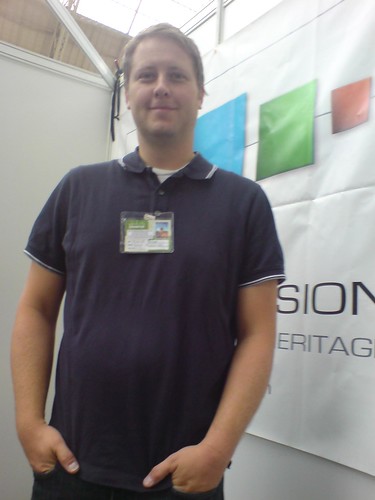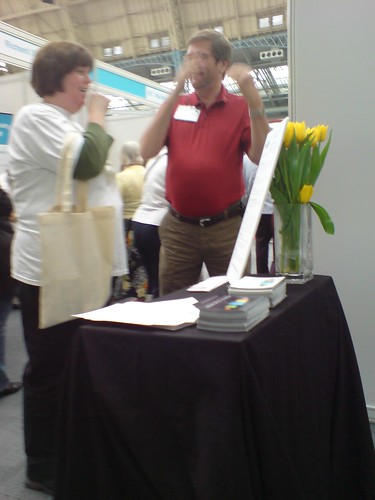by Dae Powell [www.shoestringgenealogy.com]
presented by Jayne McCormick [www.bitsofblueandgray.com]
.
Do you settle in for a research session and spin your wheels? Do you get little or nothing accomplished? I can't afford to waste my research time, and I’ll bet you can't, either. This little presentation will share some of my tips and hints for minimizing my research time, but yet result in a maximum return. This involves some pre-work the first time, but later, you'll find that you just “grab your bag” and go.
.
My personal research falls into eight categories:
1) Pre-work;
2) Using forms;
3) Controlling your paper file;
4) Gathering information by mail;
5) Using the Internet;
6) Analyzing every record to its fullest potential;
7) Utilizing research facilities; and
8) Tapping into the knowledge of others.
.
Along the way, you learn research etiquette and how to make every minute count on your research trips.
.
.
.
1) Pre-work. The first thing I learned from an experienced researcher was to take *every* surname I had in my records, and make a 3 x 5 card with the surname listed at the top, with the “soundex” just below it. These are filed in alphabetical order in a small box. This box goes with me on research trips, or I take out the cards I will need and take just those. By doing this, I don't take up valuable time working up a soundex code at the last minute when I'm in a library or other research facility. When I return, they are refiled in my box to be used again and again. When I get a new surname, I immediately make a “Soundex Card” and file it. That way, my Soundex Box is always up to date.
.
Make up a “To Do” list if you can't do it with your software program. Have a definite game plan of what you need, where you need to visit or write, and prioritize those items on your list. When I make my list, I use my computer-generated list, and then prioritize them as to making as few stops as possible. Combine research tasks: if you can do all of them at a Family History Center, go for it. If the Family History Center is near the city library, perhaps you can combine the two for one trip.
.
Classifying your ancestors by ethnic group, fraternal or religious affiliation, residence (local, county and state), gender, occupation, military service, time frame or era, social class, and any other classification you can think of will give you ideas for additional records to seek. On my g-g-grandmother’s side, most of my people were farmers in South and Central Illinois, so I wouldn't be looking in big cities for their records. I would check the land records or tax records at the county level and go from there. My grandfather's people immigrated from Germany to London to St. Louis, Missouri. A totally different group of parameters apply there. Make your plans accordingly.
.
Other groups or societies that may already have the information you need may include fraternal organizations such as the Foresters, Masons, Eastern Star, Sons of Italy, etc. Also check the records for a church affiliation (e.g., Catholic, Latter-day Saints, Methodists, etc.). My family has a Catholic background and their records are extensive. If your family was born, married, raised a family and died in the same area, the church records may be one of your best resources. Again, make your plans accordingly.
.
Check migration patterns. How did your people arrive at the final destination? Records could be found all along that route.
.
2) Using Forms - there are as many forms out there as people doing genealogy. I've found that taking an existing form, and adapting it for my uses seems to be the most effective for me. An excellent book showing the many types of forms available is Unpuzzling Your Past Workbook by Emily Anne Croom. There are forms there that can be copied for your use. I personally don't worry much about the Pedigree Forms, the Family Group Sheet, or the Individual Sheet because my computer's software program does that for me. The forms that I can't live without are my logs and my check-off sheet. I made up my own check-off sheet so that I know which resources I have checked. That way, I don't retrace my steps. My log tells me what I found at that resource. I use these two forms as an adjunct to one another. Many researchers neglect to use this important concept to record *everything* they look at. Use of these prevents duplication of research, but it also allows you to retrace your steps if you have to take another look at the source.
.
Record *both* negative and positive information. If you look at a census and don't find anything, do you want to look at it again a year from now because you forgot you already looked there? I don't think so.
.
Another *form* I use is a local map. I color in the towns where I know my people lived. You can see what towns are adjacent to one another. For example, if there are two towns involved with no records, look for a town in the middle or close by. Often, the records you seek will be there.
.
Always use a correspondence log. You use this to record all genealogy correspondence whether it is by regular mail, e-mail, or fax. This will be explained in more detail later.
.
I made a check list sheet. It has places to note where I've looked and where I still need to look. Our local genealogy society uses this and has them available for reference to anyone who comes to the library. If you would like a copy of the check-off sheet, or any of these other forms, visit www.ShoeStringGenealogy.com and click on the menu option, Charts.
.
3) Control your paper file. We all have piles of paper on the desk, floor, wherever. I admit this was my weak link. The idea is to find a place for that piece of paper the minute you're through working with it. Those piles can get very intimidating and irritating to the other members of the household. They just can't understand why each and every scrap of paper is vital to your research.
.
Get a good genealogy software program, one that fits your needs. There are many out there, check them out and get one that you can use easily. Look for a program that is easy to learn and to get started with, but that has ample growth potential. I use The Master Genealogist (TMG), but that is my personal choice and may not be suitable for everyone. (NOTE: TMG is THE BEST software for documenting ancestors. If you are only collecting names, however, it is like hiring a Certified Public Accountant to balance your checkbook.) Once you decide on a program, see if there is a local users’ group. Attending their meetings is a good way to become proficient in your data entry in a very short period of time.
.
4) Gather information by mail. Why not let the US Postal Service work for you? Requesting information and records by mail can save you hours of research time. Using the mail to send for information on a particular facility is the most efficient use of your time. If you only need one document, it is not practical to make a trip. This is when I use the mail. If I need many items in the same locality, then I plan a trip. The only drawback to using the US Postal Service is you must have PATIENCE! Remember....... only submit one request at a time. Wait till you get an answer before you ask for another search. Always send a self-addressed, stamped envelope. This is especially true if you are requesting information from a private party. Aunt Nellie may not be able to get out to buy an envelope and a stamp, and that may keep her from replying to you with the information you have been seeking for years. Another reminder...the less information you ask for in each request, the more likely the reply will be fairly prompt. Most of the time, you will not get a reply by return mail; it probably will take several months.
.
Use a correspondence log to keep track of the status of your requests. Record the date it was sent out, and the date you received a reply. Assign an index or catalog number to EVERY piece of correspondence (regular mail, fax, or e-mail). Write the number from your log directly on the response, and you will always have a cross-reference to the question you asked. I have a file with the log on top, and a copy of the correspondence behind it. When I receive an answer, the copy is removed from the file and the answer, along with the letter, is filed in the family file in my file cabinet.
.
5) Use the Internet to its full potential. New items are being added every day. Use Rootsweb (www.RootsWeb.com). Use the GenWeb pages. Subscribe to the newsletters (Dick Eastman's "Online Genealogy Newsletter," Dear Myrtle's "Genealogy Column," George Morgan's "Along Those Lines" and Bill Hocutt's "Adventures in Genealogy" (www.genealogytoday.com) are a few. Family Tree Magazine has a good one. You can sign up to receive it via e-mail at their home page at www.familytreemagazine.com
.
Check "Cyndi's List" for sources (www.CyndisList.com). Check John Fuller's list of mailing lists (www.rootsweb.com/~jfuller/gen_mail.html). Post queries on localities and surname mailing lists. Use the surname message boards. Use your search engines to find URL's and bookmark them. Go there frequently to check for updates. Attend chats and participate in those relative to the localities you are researching. SHARE your information. Don't expect another chatter to hand you years of their research without getting something in return. If you don't have anything to share, offer them something in return. If they need a lookup in your area, do it. Make a donation to a local genealogy society in their name if they will not accept any reimbursement for what they give you. Don't expect everything to be handed to you on a silver platter. It just doesn't work that way.
.
6) Analyze what you find. Get the most out of it you can. I will have a future talk about "Analyzing Your Genealogical Research." Is the information reliable, usable, or simply a clue to further research? Think like a detective . . . look for clues. Most researchers do not fully utilize the records they acquire. Understanding how and why the record was created can help you understand the information contained in the record. Why was this document created? Am I looking at the original or a copy? Study the differences in the census records. Each new census added columns, subjects, and questions. Check for locations, occupations, education, etc. Look for maiden names, parents' names, places of birth. Terminology has changed over the years. What were they trying to say back then? Put it away . . . make a note to yourself to go back every couple of months to see if any new information you've received sheds a light on what you got earlier. Use the "bulldog" approach . . . latch onto a source and don't let go until you get everything you can out of it. Review, review, and review again. And then . . . in 6 months, review it again! See what you missed the first time. See how it ties into the research you've done since you reviewed it last time.
.
7) Utilize research facilities ... there are so many, I don't know where to start. Use the National Archives (census, passenger arrival lists, naturalization records, military pension record, bounty land warrant records, etc.) Send for copies of the Social Security Applications. Use the State research facilities. Every state has archives. Some are better than others, it's true . . . but use what they have. Use the Family History Centers! There are also state libraries, state vital records offices, state historical societies, local libraries, societies and record offices. The Everton's Book (Everton's Handybook for Genealogists) is a wonderful reference book which lists these sources by state, then by county. In a chat you may often hear, "I don't know, let me get my Everton's." The Source is another good source of where to go for what.
.
One interesting source is to check the cookbook section of the local library. Many churches and schools are publishing "local" softbound cookbooks. I've found recipes from my grandmother, aunts, cousins . . . they make joyous additions to the genealogy history of my family. You also have a time frame here . . . check the publication date. I found some of my grandmother's recipes in a depression-era cookbook when sugar was rationed. It seems that the farm families fared better than most, but they still had to get quite creative with their cooking.
.
Organize your information on the research facilities. Get information (hours, holidays, lunchrooms, parking, restrictions, etc.) Find out the best time to go there (is it busier in the mornings than in the afternoon)? Take a good supply of change for the copy machine, or purchase a copy card. Get flyers of local interest. Is there a local living history museum? Get maps of the area.
.
About halfway through your allotted research time, check your progress. Are you spending too much time on records of lesser importance? If so, go on to the important ones. Reassess your goals if you need to.
.
Make copies instead of writing things down. Make sure to copy the title page of the book first. That contains information including the title, author, place and date of publication. This will be needed to cite your sources. Then copy the pages you need. Write the library call number down on the cover page. I also write the name of the facility so I can remember where I used the book, in case I need to go back later for additional information. If you carry a laptop with you, try to avoid the temptation to enter all the information you find in books or records while at the research facility. You can spend hours transcribing information that could be copied in seconds for a nominal fee. Copies are cheap insurance that you get all of the information you need EXACTLY as it was presented. Remember, your time is valuable. Decide which is more valuable . . . your time or copies of the information. Later on at home, you can enter this information at your leisure and analyze it more thoroughly.
.
8) Tap into the knowledge of others. Network with other genealogists (that's what the Forum's chat rooms are for). Networking is one of the best timesaving tools available. Become a member of a local, county, state or national genealogical society; watch newspapers for lectures that might interest you; volunteer at a facility that houses records, such as a library or archives facility. If you are a member of a local genealogical group, you should be able to network with other researchers in the area. If you use the local libraries, you will most likely run into the same people again and again. Make friends with them and everyone will benefit.
.
Another resource that is often overlooked is the local Council on Aging or senior citizens groups in the area you are researching.
.
Talk to your relatives. Before you do, make a list of the things you want to ask Aunt Nellie. They may be different from what you'd ask Aunt Sophie. Tailor your questions to the individual you are interviewing. Be patient, especially if they are elderly. Don't overwhelm them or you will get zilch. I like to give them a copy of the pedigree chart, showing where they fit in. That usually opens the topic of conversation. Then I promise that when I get their data processed and on the computer I'll send them a copy. And I then do it. The next time I have questions, the door is wide open. Also, if you find out when Aunt Nellie's or Aunt Sophia's birthday is, sending them a birthday card just sweetens the pot for the next time you have questions. Just don't be too disappointed if not everyone is as excited about the family tree as you are.
.
One thing I have noticed about my relatives is that they tend to get self-conscious when I ask them questions and they see my pencil and pad. So I've gotten clever. I find they will talk freely when they don't see a pencil and paper. So, I used to have a *very* small tape recorder in my pocket and I watched the time. My new digital recorder is truly a marvel. Some of the memories can be quite emotional for them, especially if they are elderly. Respect their feelings and give them a break from time to time. Don't try to do too much at a time. You may get more out of several short sessions rather than one session. Some memories are quite emotionally draining for them. The wonderful side aspect of this is that you have their voice on tape for forthcoming generations.
.
Don't forget about talking to neighbors of the people you're researching. Some of my most precious stories come from neighbors of my grandparents who remembered 4th of July parties, Christmas doings, ice cream socials, weddings, deaths, births, etc.
.
Finally, I close with the researchers' rules of etiquette:
1. Remember that your research is not the clerk's priority.
2. Don't enter an office or library within one hour of closing time.
3. Be patient with the staff and wait your turn.
4. Dress in a businesslike fashion -- neat, clean and professional.
5. Show respect for the records and the staff that maintains them.
6. Leave all books or records in the same, or better, condition than you found them.
7. Be careful in your handling of all documents.
8. If there is no charge for the assistance given you (at churches, historical societies, and cemetery offices), make a small monetary contribution.
9. If you use a facility on a regular basis, consider volunteering or just assisting others while you are there.
10. Learn about the records you intend to use BEFORE you go.
11. Present a positive attitude and say "please" and "thank you."
12. Always express your appreciation to the staff before leaving.
(List by Marcia Yannizze Melnyk)
.
Remember, be nice and you'll get nice back. If you come across as a snert, and that's exactly the way you'll be treated. Ask permission before you cross private land. If you open a gate, close it behind you. If you're researching in farm country those fences and gates are there for a reason. And, remember the genealogist's code: If the locals have a good experience with helping you, they'll be more apt to help the next person. Be sure to leave a good legacy for the next researcher.
new chat location
GeneaologyFriendsUK (Keyword to: aol://2719:2-2-GeneaologyFriendsUK)Fiday evenings 9:00 pm UK time od 4:00 pm NY USA timethanks to Dae, Jayne and UKLeaderLeafy








